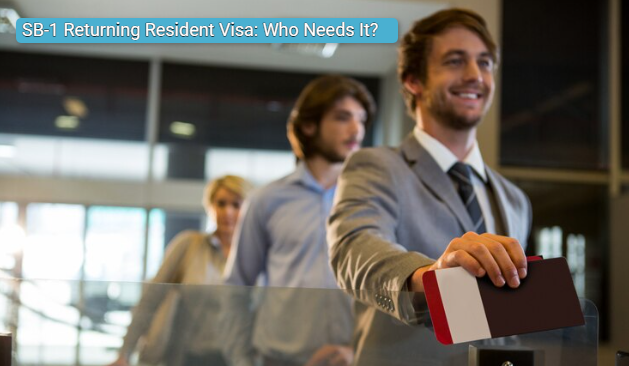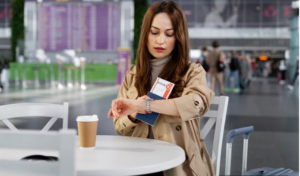SB-1 Returning Resident Visa: Who Needs It?

Introduction
For many lawful permanent residents (LPRs) of the US, maintaining your green card status requires planning, particularly while traveling abroad. If you have been abroad for over one year (or outside the time limit on your reentry permit), you may need an SB-1 visa— also known as the returning resident visa—to reestablish your permanent resident status.
This guide will cover all you need to know about the SB1 returning resident visa, such as who is eligible, the process of applying, the documents needed, the SB-1 visa success rate, and the most common causes for denial.
You’ll be provided with a clear, step-by-step guide to obtaining your resident return visa and returning smoothly to the United States.
What is the SB-1 Visa?
The SB-1 visa officially called the returning resident visa, is for lawful permanent residents (LPRs) who have stayed outside the U.S. for an extended period and can no longer use their green card for re-entry.
Why is the SB-1 Visa Needed?

A green card holder normally keeps their status by returning to the U.S. within a year or during the validity of their reentry permit (a maximum of two years). In case this period is exceeded, the green card is no longer valid for reentry, and the person will have to apply for an SB1 visa to keep their residency.
Without this visa, the U.S. government presumes that the individual has abandoned their residence, and they would otherwise have to start the whole immigration process again.
Who Requires an SB-1 Visa?
The visa SB1 is required for green card holders who:
- Have remained outside the U.S. for more than one year without a valid reentry permit.
- Were prevented from returning to the U.S. due to circumstances beyond their control.
- Can provide evidence that they had close connections with the U.S. and did not intend to abandon their residency.
Typical Reasons for Protracted Absence Abroad
Most legal permanent residents face unexpected circumstances that cause them to stay longer than expected, including:
- Medical emergencies (serious illness, surgery, or prolonged medical treatments).
- Family emergencies (death or sickness of an immediate family member).
- Travel restrictions (border closures, visa delays, or government restrictions such as during COVID-19).
- Natural disasters or political instability in the nation where they were residing.
Who Does NOT Require an SB-1 Visa?
Not all green card holders who are green card holders and travel to another country for a long duration require an SB1 returning resident visa. You do NOT require an SB-1 visa if:
- You were abroad for less than a year (or less than two years with an approved reentry permit).
- You hold an approved U.S. reentry permit.
- You are a U.S. citizen or dual citizen.
- You already applied for and obtained a new immigrant visa based on a family- or employment-based petition.
SB-1 Visa Application Process: Step-by-Step Guide

Obtaining an SB1 visa involves several steps, including proving that you never had the intention of abandoning your U.S. residence.
Step 1: Contact the U.S. Embassy or Consulate
Schedule an appointment with the U.S. embassy or consulate where you are residing.
Step 2: Submit Form DS-117 (Application for Determination of Returning Resident Status)
Submit Form SB-1 (officially Form DS-117) to petition for recognition as a returning resident.
Step 3: Submit Supporting Documents
Along with Form SB1, you need to submit:
- Evidence of Permanent Residency: Green card, reentry permit, U.S. tax returns.
- Evidence of Connection to the U.S.: U.S. property ownership, family relationships, bank accounts, and work records.
- Reason for Protracted Absence: Medical reports, death certificates, travel bans, or official letters.
Step 4: Consular Interview
Attend an interview at the U.S. consulate, where you will be required to:
- Justify your extended stay abroad.
- Prove strong connections to the U.S.
- Show that your absence was not under your control.
Step 5: Medical Exam and Form DS-260 Submission
If your SB1 returning resident visa is granted, you will:
- Take a medical exam with a U.S.-approved physician.
- Fill out Form DS-260, the standard immigrant visa application.
Step 6: Wait for the Decision
The SB-1 visa success rate will depend on the strength of your proof. If your application is approved, you will receive an immigrant visa, allowing you to return to the U.S. as a permanent resident.
Required Documents for SB-1 Visa

To increase your chances of approval, make the following preparations:
- Form SB-1 (DS-117)
- Valid passport
- Expired or current green card
- U.S. tax returns
- U.S. property ownership or lease agreements
- Employment verification (if necessary)
- Medical or travel documents substantiating your late return
How Long Does the SB-1 Visa Process Take?
Processing time for an SB-1 visa is not consistent, as it depends on the workload of the U.S. embassy or consulate that is processing your application.
Here’s a general outline:
- Scheduling the First Appointment: 2–4 weeks (varies per embassy)
- Form DS-117 (Returning Resident Application) Processing: 1–3 months
- SB-1 Visa Interview Scheduling: 1–2 months following DS-117 approval
- Medical Exam and DS-260 Submission: 1–4 weeks post-interview
- Final SB-1 Visa Decision: 1–2 months
Processing Time Factors
- The effectiveness of the U.S. embassy or consulate
- The accuracy and completeness of your documents
- Additional administrative processing, if necessary
- The number of SB-1 applications being processed at the time
Because the process can take months, you should start your application as soon as you think you might need an SB-1 visa.
How Much Does the SB-1 Visa Cost?
Obtaining an SB1 returning resident visa costs several fees, including:
- Form DS-117 (Application for Returning Resident Status): $180
- Form DS-260 (Immigrant Visa Application): $325
- Medical Examination Fee: Varies by country ($100–$500)
- U.S. Visa Issuance Fee (if applicable): Varies
Total fees would cost between $500 and $1,000, depending on location fees and medical exam fees.
Typical Reasons for SB-1 Visa Denial

Despite proper preparation, some receive denials for:
- Lack of sufficient evidence for U.S. ties.
- Lack of unexpected circumstances resulting in delay.
- Missing documentation, including failure to submit U.S. tax returns.
- Voluntary abandonment of residency.
- Misrepresentation or fraudulent statements.
If your visa SB1 is rejected, you will be required to apply for a new immigrant visa based on family or employment sponsorship.
Alternatives if Your SB-1 Visa is Denied
If your SB-1 visa application is unsuccessful, you can consider:
- Reapplying with more strong supporting evidence.
- Applying for a waiver of certain immigration violations.
- Restarting the immigration process via a new family- or employment-based immigrant visa.
How to Prevent Losing U.S. Permanent Resident Status in the Future
To avoid needing an SB-1 visa in the future, take active measures to keep your U.S. residency:
-
Restrict Your Time Outside the Country
- Always come back to the U.S. within one year if you have a green card.
- If taking a long trip, get a reentry permit before you leave.
-
Get a Reentry Permit (Form I-131)
- A reentry permit permits green card holders to remain abroad for two years.
- Unlike a green card, a reentry permit avoids the assumption of abandonment of residence.
-
Retain Strong Ties to the U.S.
- File U.S. tax returns annually.
- Have a valid U.S. address and retain property, bank accounts, or family connections.
- Avoid activities that suggest you have permanently established yourself abroad.
-
Seek U.S. Citizenship
- If qualified, naturalize to prevent residency issues.
- American citizens are not under reentry prohibition.
Conclusion
The SB1 returning resident visa is a lifeline for lawful permanent residents who have stayed outside the U.S. for more than one year due to unexpected circumstances. Though the SB-1 visa success rate depends on strong documentation and evidence of returning intent, thorough preparation can enhance your chances for approval.
If you require professional advice, talk to immigration lawyers to ensure your SB-1 visa application runs smoothly.
Need Assistance with Your SB-1 Visa Application?
If you are facing issues with your SB-1 visa, require legal guidance, or would like to have a smooth application process, Passage Law can assist you. Visit Passage Law to consult with our professional immigration lawyers today.
